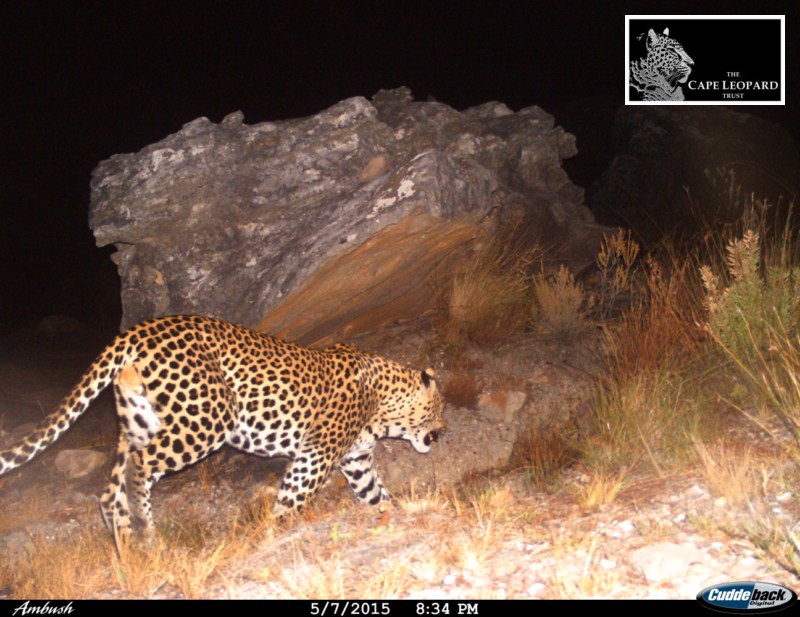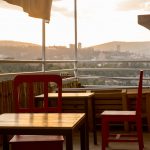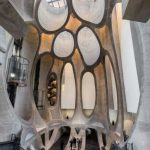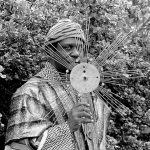PROTECTING THE CAPE’S BIG CATS WITH THE CAPE LEOPARD TRUST
The scenic Western Cape winelands are one of South Africa’s top tourist attractions, and it’s a rare visitor who doesn’t spend at least a few days exploring the region’s manicured estates and charming cellar door tasting rooms. Here, thousands of acres of neatly trellised vineyards fan out in every direction, buffered only by the outskirts of Cape Town and the towering Hottentots Holland Mountains.
Yet few tourists – as they admire the scenery from the terrace of an historic manor house, glass of Chardonnay in hand – realise that those high peaks hold a remarkable secret.
Across the mountainous corners of the winelands, Cape Leopards still roam wild. Shy, elusive and endangered, these remarkable big cats have been dubbed the ‘ghosts of the mountains’; seen only by fortunate hikers, eagle-eyed farmers and dedicated researchers.
Today those researchers are likely to be working for the Cape Leopard Trust (CLT), a not-for-profit organisation that combines research and education in a bid to conserve the threatened cats of the Cape. Established in 2004 by Dr. Quinton Martins, the Trust has its roots in the Cederberg Mountains some 300-kilometres north of Cape Town, where Martins first researched the populations of wild Cape Leopards, and worked on solutions to human-predator conflict.
Today, the project runs similar research, conservation and educational projects in the Boland region surrounding the wineland hotspots of Stellenbosch and Franschhoek, as well as in the Gouritz Corridor near the small towns of Calitzdorp and Oudtshoorn.
![[Photo: Ann & Steve Toon]](https://www.weareafricatravel.com/wp-content/uploads/2017/01/Fieldwork1-CREDIT-AnnSteve-Toon-1.jpg)

With vast ranges across inhospitable mountain terrain it’s understandably difficult to estimate the exact population of Cape Leopards, but a large-scale remote camera survey conducted over six years identified in excess of 60 individual adult leopards in the mountains stretching from the winelands town of Tulbagh to the coastal Kogelberg Biosphere Reserve.
![Boland camera trap [Photo: Cape Leopard Trust]](https://www.weareafricatravel.com/wp-content/uploads/2017/01/Boland-cam-trap1-CREDIT-Cape-Leopard-Trust.jpg)
![[Photo: Cape Leopard Trust]](https://www.weareafricatravel.com/wp-content/uploads/2017/01/Fieldwork4-CREDIT-Cape-Leopard-Trust-266x400.jpg)
All of which becomes an expensive business for a non-profit organisation. Aside from fuel, vehicles and salaries, sensitive field cameras cost in the region of R5000, while high-tech GPS tracking collars can set the Trust back some R50,000. Currently a collective of corporate entities and private organisations, including a number of businesses active in the regions where leopards roam wild, sponsor the Trust. An annual fundraising art auction – this year hosted by the Donald Greig Gallery in Cape Town’s V&A Waterfront– is also a crucial contributor to the bank balance, this year raising more than R400,000.
The glamorous confines of an art gallery may be a far cry from those high and rugged peaks, but next time you’re soaking up the idyllic scenery of the Cape winelands, cast your gaze towards the rocky summits where Cape Leopards still roam wild.
![[Photo: Cape Leopard Trust]](https://www.weareafricatravel.com/wp-content/uploads/2017/01/Fieldwork5-CREDIT-Cape-Leopard-Trust.jpg)
![[Photos: Cape Leopard Trust]](https://www.weareafricatravel.com/wp-content/uploads/2017/01/BM16.jpg)











